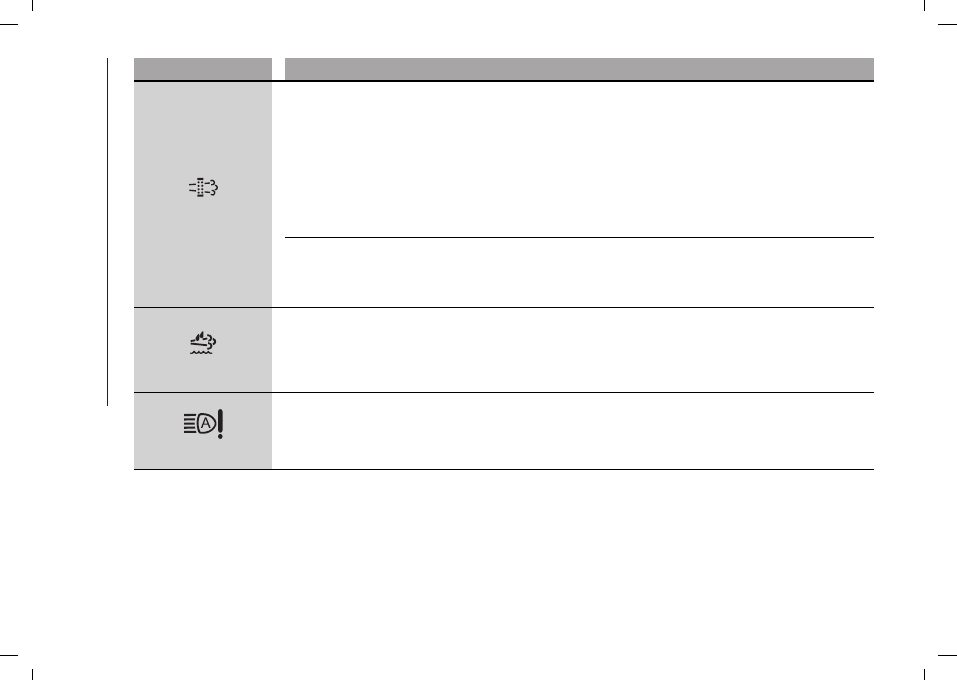Fiat Tipo 5Door / Tipo Station Wagon (2022 year). Manual in english - page 5

KNOWING THE INSTRUMENT PANEL
74
Symbol
What it means
amber
GPF CLEANING (particulate filter) in progress (petrol versions only with GPF) (where provided)
The symbol lights up fixed, and a dedicated message appears on the display, to notify the driver that the GPF
system needs to eliminate captured pollutants (particulate) through the regeneration process.
The symbol does not light up on during every GPF regeneration, but only when driving conditions require that the
driver is notified.
To turn off the symbol, keep the car in motion until the regeneration process is over. The optimal conditions for
completing the process are achieved by varying the speed of the car (press and release the accelerator pedal).
Hold a speed faster than 60 km/h, on extra-urban roads, with the engine running fastener than 2000 rpm, until
the symbol and the message disappear from the display.
When this symbol switches on, it does not indicate an anomaly and thus it should not be taken to a workshop.
GPF FAILURE (particulate filter) (petrol versions only with GPF) (where provided)
The symbol lights up fixed together with the warning light and dedicated messages appear on the display in case
of failure to the GPF (Gasoline Particulate Filter).
In this case, contact a Fiat Dealership as soon as possible.
amber
INDICATION OF DIESEL EMISSIONS ADDITIVE LOW LEVEL (UREA)
(for versions/markets, where provided)
The Diesel Emissions Additive (UREA) low level symbol lights when the UREA level is low.
Top up the UREA tank as soon as possible with at least 5 litres of UREA. If topping up is done with remaining
range of UREA in the tank equal to zero, you may need to wait 2 minutes before starting the vehicle.
amber
AUTOMATIC MAIN BEAM HEADLIGHTS FAILURE
The symbol switches on to report a failure of the automatic main beam headlights. Contact a Fiat Dealership as
soon as possible.